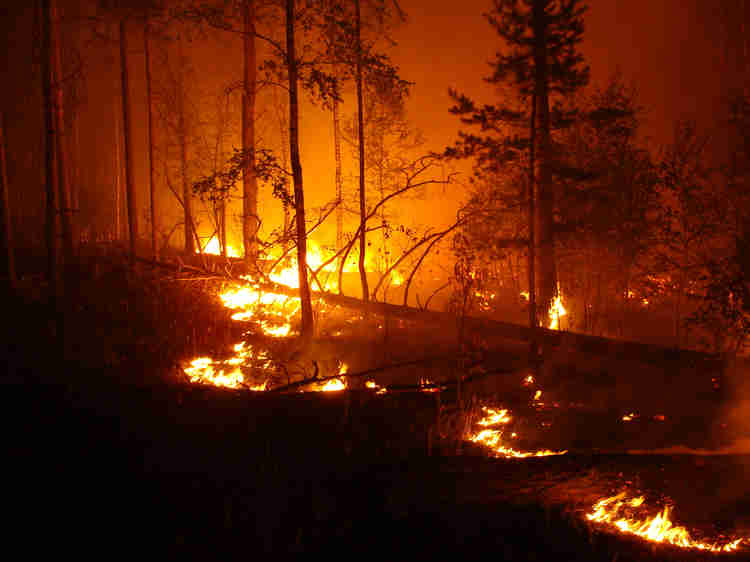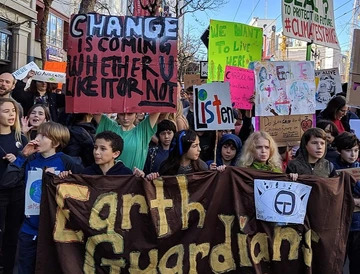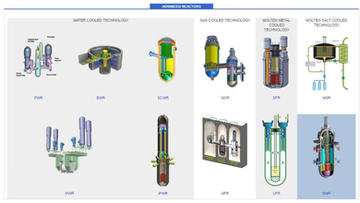California has shored up firefighting manyfold in the last 10 years, but the efforts are still getting outflanked. In the last five years, California has suffered 10 of the top 20 most destructive wildfires in our state’s history.

When Columbia University scientists compared the records of CA forest fire areas against all other present variables, the strongest correlation was the atmosphere’s aridity, or dryness — a result of rising temperatures. The study found that the areas of California that burn during any given year now burn at least five times as much, and our changing climate is the main cause.
Wildfires, from California to Australia, are only the tip of the iceberg when it comes to the effects of global climate disruption. Lethal heat waves, intense droughts, and catastrophic superstorms and floods are among the grave threats to our planet’s communities, economies, and ecosystems.
These disasters exacerbate social tensions, inequities, conflict, and violence. While the people most affected tend to live in developing regions, our Earth’s climate knows no borders. The bell tolls for all of us. But even with huge gaps in global climate leadership, the opportunities to deploy solutions are even greater.
U.S. Policy Lags Behind
Several international agreements have aimed at addressing climate change over the past few decades. As of 2019, 196 states plus the European Union have signed the Paris Agreement, a voluntary and nonbinding agreement within the United Nations Framework Convention on Climate Change (UNFCCC) to reduce emissions of greenhouse gases (GHGs), the main one being carbon dioxide (CO2). The accord also calls for greater climate adaptation measures and overall financing. To date, 183 nations and the European Union (EU) have ratified the agreement.
While the majority of the American public acknowledges that climate change is real, policies in Washington D.C. do not reflect this understanding. In 2017, the Trump Administration withdrew the United States from the Paris Agreement. The federal Clean Power Plan, introduced under President Obama, aimed to mitigate climate change by limiting greenhouse gas (GHG) emissions from the energy sector. Not surprisingly, this resulted in a significant drop in mortality rates. The Trump administration repealed the Plan in June 2019, stalling national-scale efforts to act on climate and pollution.
Growing Grassroots Initiatives
Other elected officials are stepping up and proposing initiatives like a “New Manhattan Project,” which has been gaining traction in conservative circles, and a “Green New Deal,” which has galvanized progressives in a way that no one could have predicted even a year ago. Many organizations like the Sunrise Movement are calling for a Green New Deal that will provide millions of green jobs to mobilize climate action.

As more and more people witness and experience firsthand the impacts of our changing climate, youth have started to demonstrate. Anxious about their future on a hotter planet and angry at world leaders for failing them, young people and their allies are striking from school and work to march and sing in the streets. On a single day in September 2019, four million people participated, spanning every continent on Earth.
Never before has humanity showed up to demand climate action in so many places and in such numbers around the world. How do we translate this powerful momentum into massive investments in climate & energy solutions, given available time and resources? How do we empower engineers and scientists to work on behalf of the children striking for their futures, and all of humanity and nature?
The first and most obvious step is to end our reliance on coal, the most carbon-intensive of all energy options, and among the most toxic to health. The World Health Organization estimates that 4.2 million lives are lost annually to outdoor air pollution, caused by burning fossil fuels such as coal. In 2018, coal accounted for about 27% of total U.S. electricity generation, when science tell us that number should be zero.
Another fundamental step we can take is to replace internal combustion engine vehicles with electric vehicles (EVs) that are carbon-zero. So what’s the strategy for fueling EVs with electricity that does not come from fossil fuels?
The current alternatives we hear about a lot — solar and wind — seem like the heroes coming to save the day, but they have limitations. Despite getting cheaper, they’re not being installed at a rate fast enough, worldwide, to reverse our GHG emissions trajectory.
And, the obvious questions: what if the sun isn’t shining, or the wind isn’t blowing? Without adequate energy storage on the grid, intermittent energy sources like wind and solar require support from a baseload power source. This predicament is creating energy dependence on fracked “natural” gas — yet another polluting fossil fuel.
We Can Do Baseload Better
Nuclear energy is already providing clean, emission-free electricity in most countries belonging to the OECD (Organization for Economic Co-operation and Development), and many other parts of the world. More importantly, the reactors of today are far safer and more proliferation-resistant, cost-effective, and sustainable than many people realize.
Small modular reactors, or SMRs, are already in the design and demonstration phase. They’re designed with modular technology on a production line, with small fuel loadings, passive safety features, and the capacity to work in tandem with fluctuating renewable sources. SMRs can be located near the mining sites and in remote towns, eliminating the costs and risks of long-distance energy transmission, all while delivering cheaper, steadier power. The Generation IV reactors currently in the research and development phase can start to replace existing nuclear power plants as well as the polluting coal-fired power stations.
In developing countries, like India and China, Gen IV and SMRs can be shoehorned into newer coal-fired power plants. This is popular politically because it protects their stakeholders, increases local property values, and makes sure the coal burning actually stops. Sadly, building new clean generation in a market hungry for energy doesn’t slow down adjacent coal burning. Converting coal plants to nuclear would be a double victory.
Source: International Atomic Energy Agency

Generation IV and SMRs offer an exciting industrial opportunity for the U.S., and climate change mitigation for our planet. So why aren’t these carbon-free energy solutions being implemented in the U.S.?
One primary reason is that many people assume renewables alone are enough to power the world in the coming decade. But even with their amazing growth over the past 20 years, solar and wind cannot keep up with rising global energy demands by themselves.
They only provide intermittent power, and their storage technologies are not yet robust enough to keep pace. That means that the greater the share of renewables in our energy mix, the more expensive it is to produce energy efficiently.
Nuclear Gets an Undeserved Bad Rap
Detractors usually cite four reasons why they oppose nuclear: consent, price, time, and safety.
A common assumption is that no one wants a nuclear power plant or waste facility in their backyards. But the reality is, according to a 2019 survey, 75 percent of Americans want Generation IV nuclear reactors, which are not prone to meltdowns, fallout clouds, or waste problems. Permanent repositories for safe management of high-level waste generated from nuclear power production are being established with community consent in places like Finland, Sweden, Canada, and France. In the US, new technologies are underway to make sure nuclear waste is safely stored in deep drillhole repositories.
When it comes to nuclear’s price tag, it’s important to note that how much we spend can vary greatly. For example, $US 6 billion will deliver a conventional 1,000-megawatt nuclear reactor, while $US 3 billion can give us a 700-megawatt plant comprising 12 co-located SMR units. Advances in manufacturing and industrial materials promise to reduce costs further.
History shows that adding a new reactor to an existing nuclear plant is often the least expensive way to decarbonize the grid. Plus, system costs for nuclear power are far lower than system costs for intermittent renewables. More recently, researchers at MIT have found that decarbonization costs are significantly lower when nuclear is part of the mix.
Detractors of nuclear like to say we shouldn’t bother because reactors take such a long time to build. The International Atomic Energy Agency (IAEA) Power Reactor Information System contains information on 441 operational reactors, including date of build start and date of grid connection. Eighteen reactors were completed in just three years. And today, 72 more are under construction in 15 countries.
Ironically, while nuclear power may have the worst PR among all energy options, it has the best safety record, based on 70 years of data. The nuclear industry hasn’t defended its stellar safety record in comparison to alternatives such as coal, which continues to kill millions of people each year.
The PR problem is exacerbated by high-profile incidents like Fukushima (Japan 2011), even though it saw only one death due to radioactivity; Three Mile Island (U.S. 1979), which saw zero deaths and no reported harm to health or the environment; and, of course, Chernobyl (Ukraine 1986).
The tragedy at Chernobyl happened because a poorly-designed reactor, built in the 1970s, was not operated correctly. Steam explosion and fire killed two people initially, and 28 more died from radiation poisoning in the following three months. Analysis of the effects are ongoing, but we now have more than 30 years’ worth of lessons learned in regulations, design, passive safety features, and operational procedures. Chernobyl was a mistake that absolutely cannot be repeated.
Let’s Heed Science and Put Nuclear on the Agenda
Zero-carbon energy production is the first major step of many to reverse climate change and build a safe, healthy, abundant future. When we look at what the data tell us about decarbonizing quickly and cheaply, we can see that a clean electricity grid is within reach — but deployment of only renewables isn’t enough to get us there on the timeline the climate crisis demands. To meet this challenge, scientists at NREL are studying how nuclear baseload power can complement renewables even more effectively and serve as a key linchpin solution for our sustainable future.
